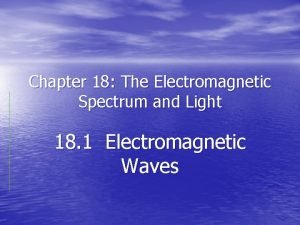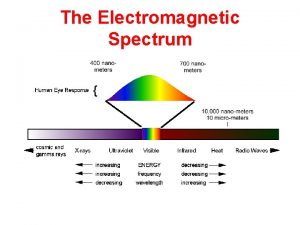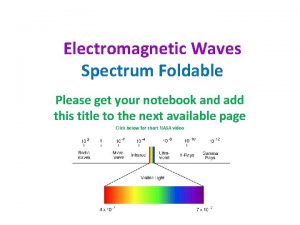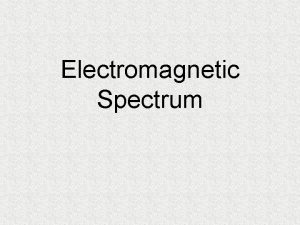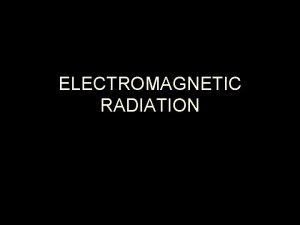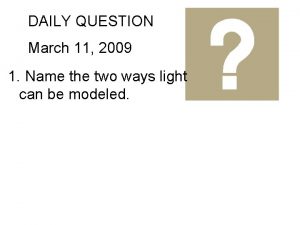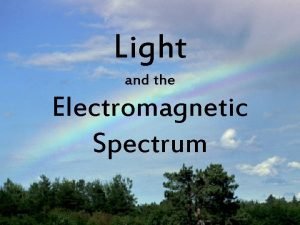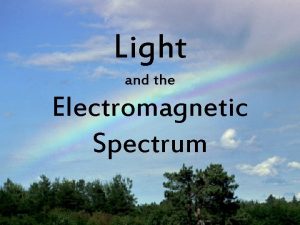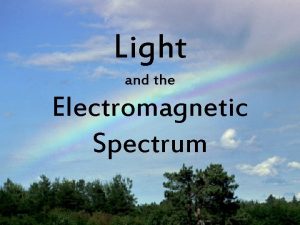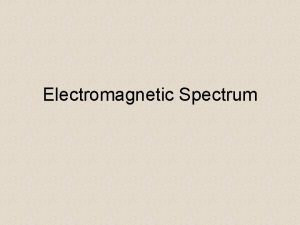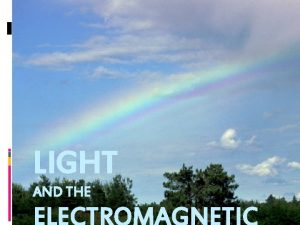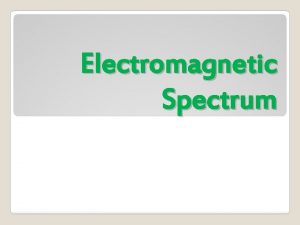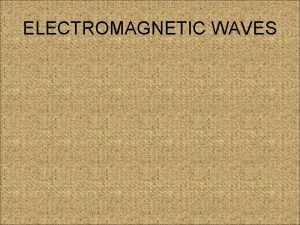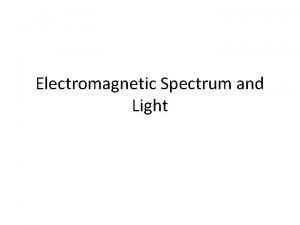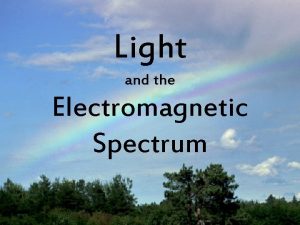Light and the Electromagnetic Spectrum Light Phenomenon Isaac










- Slides: 10

Light and the Electromagnetic Spectrum

Light Phenomenon • Isaac Newton (1642 1727) believed light consisted of particles • By 1900 most scientists believed that light behaved as a wave.

The Electromagnetic Spectrum The electromagnetic spectrum represents the range of energy from low energy, low frequency radio waves with long wavelengths up to high energy, high frequency gamma waves with small wavelengths.

Visible light is a small portion of this spectrum. This is the only part of this energy range that our eyes can detect. What we see is a rainbow of colors. Red. Orange. Yellow. Green. Blue. Indigo. Violet ROY G BIV

Frequency Ranges • Wavelengths • 104 101 1 10 2 10 5 10 6 10 8 10 10 10 12 • Frequencies (cycles per sec) 3 x 106 3 x 1010 3 x 1014 3 x 1016 3 x 1018 3 x 10 22

Frequency Ranges of Visible Light Red light has a frequency of roughly 4. 3 × 1014 Hz, and a wavelength of about 7. 0 × 10 7 m (700 nm). Violet light, at the other end of the visible range, has nearly double the frequency — 7. 5 × 1014 Hz—and (since the speed of light is the same in either case) just over half the wavelength— 4. 0 × 10 7 m (400 nm).

The radiation to which our eyes are most sensitive has a wavelength near the middle of this range, at about 5. 5 x 10 7 m (550 nm), in the yellow green region of the spectrum.

It is no coincidence that this wavelength falls within the range of wavelengths at which the Sun emits most of its electromagnetic energy—our eyes have evolved to take greatest advantage of the available light.

C = λν • The frequency (v) of a wave is the number of waves to cross a point in 1 second (units are Hertz – cycles/sec or sec 1) • λ is the wavelength the distance from crest to crest on a wave

• The colors we see in objects are the colors that are reflected, all other colors are absorbed. A red t shirt appears red because red is reflected to our eyes and the other colors are absorbed. • When all colors are being reflected we see white light (white isn’t really a color)
